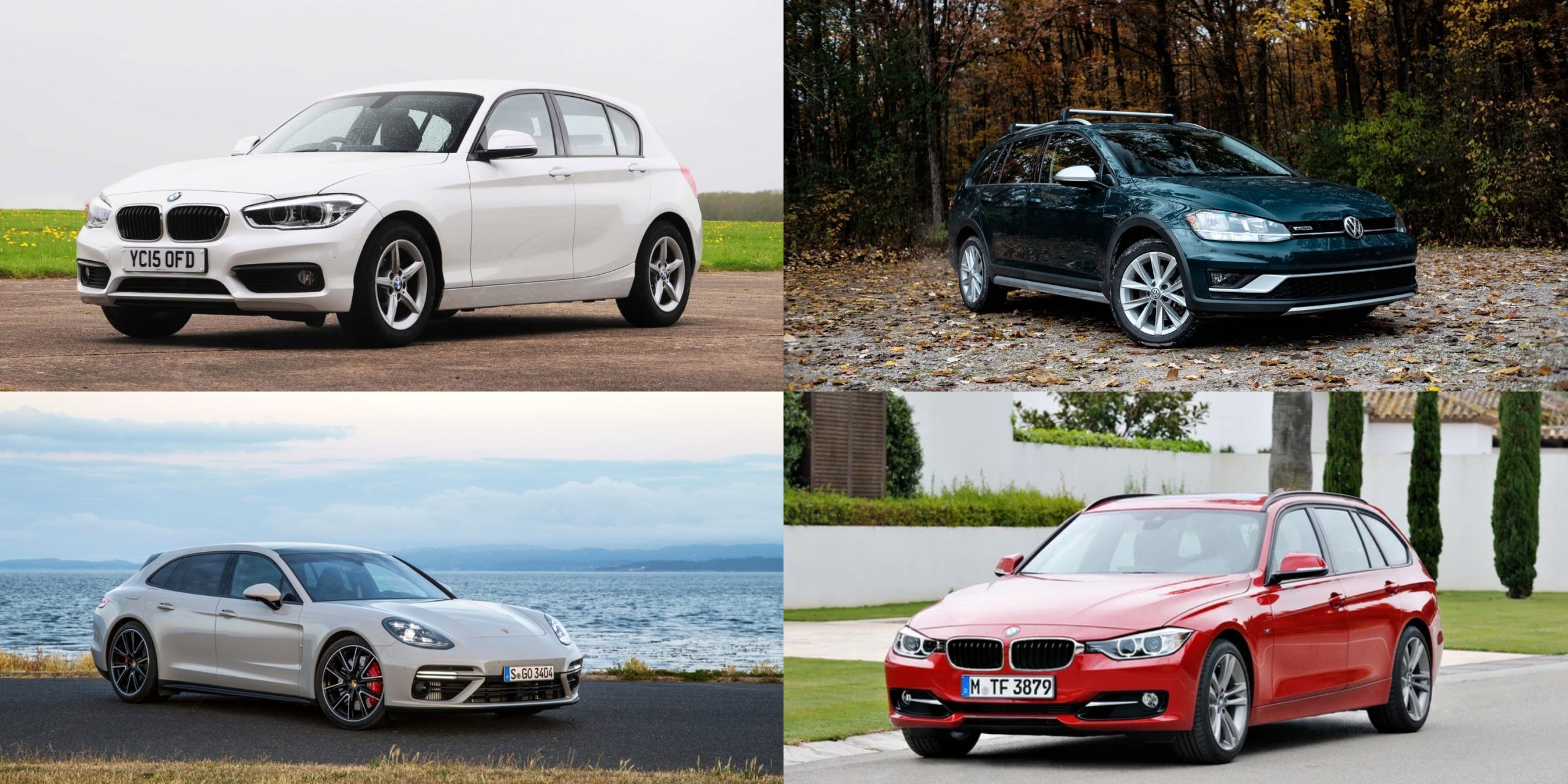We’re often told, and we keep noticing, that SUVs are everywhere. Even if the car is small, just add some plastic trim, bigger wheels, and maybe all-wheel drive, and suddenly, it becomes a top seller.
From my experience driving many of them, I can honestly say that the newest family SUVs aren’t bad. Actually, the best ones from well-known brands are quite solid.
But since I’ve also driven plenty of useful and fun cars that aren’t SUVs, I can say that people looking to buy a car — and car fans — have better options out there.
There was a time when family cars that weren’t way up high off the ground were actually pretty popular. Then things changed. Car makers stopped supporting wagons, and although minivans still do fairly well, they don’t get the same attention that sport utility vehicles do.
The next time you’re shopping for a family car, take a moment to look past the SUVs and consider some of the cool, unusual options available on the used car market. You’ll often still get all-wheel drive and a lot of practical features, along with a better driving experience and better looks.
Also Read: 5 Reliable Old Trucks and 5 That Are Best Left Alone
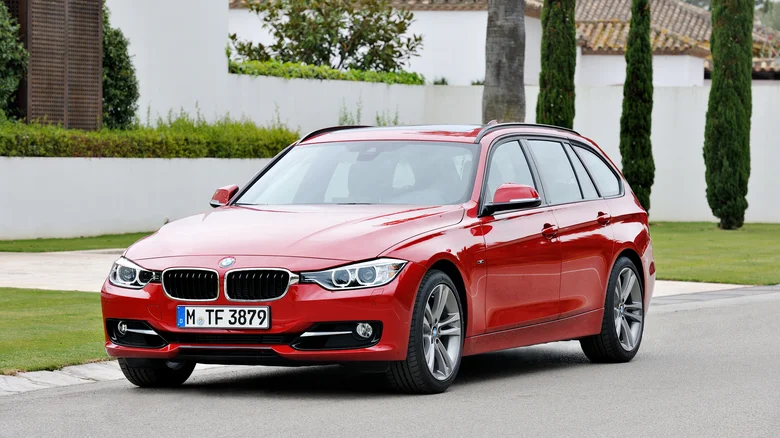
BMW 3 Series Touring (F31)
Back in the days when BMWs had better styling. Sadly, because wagons aren’t as popular in North America anymore, the 3 Series Touring stopped after the F31 model. The F31 version is pretty rare, but there are many good reasons to own one, especially the 335i.
Sadly, the F31 3 Series Touring was never sold in North America as the “diet M3,” or the 335i. All F31 wagons here had a 2.0-liter turbocharged four-cylinder engine. Some versions came with a strong diesel engine that produced a great 280 lb-ft of torque.
Every version also gave you the choice of a six-speed manual transmission and all-wheel drive. Since AWD makes a lot of sense for an F31 wagon, those models are the ones to look out for.
With 13 cubic feet of space in the back, there’s enough room for the whole family’s bags, and there’s more space inside for people than you’d expect.
Since the F31 isn’t too old, it still has many modern features. It’s also possible to add things like Apple CarPlay and Android Auto afterward. If you’re willing to take a risk, you can find an F31 for under $10,000.
But $20,000 to $25,000 is a safer range, especially if it has full service records. If you’re ready to spend more and do some work, you could swap in the N55 engine from the great 335i. I’ve driven a well-maintained 335i, and I can say it’s definitely worth the money and effort.
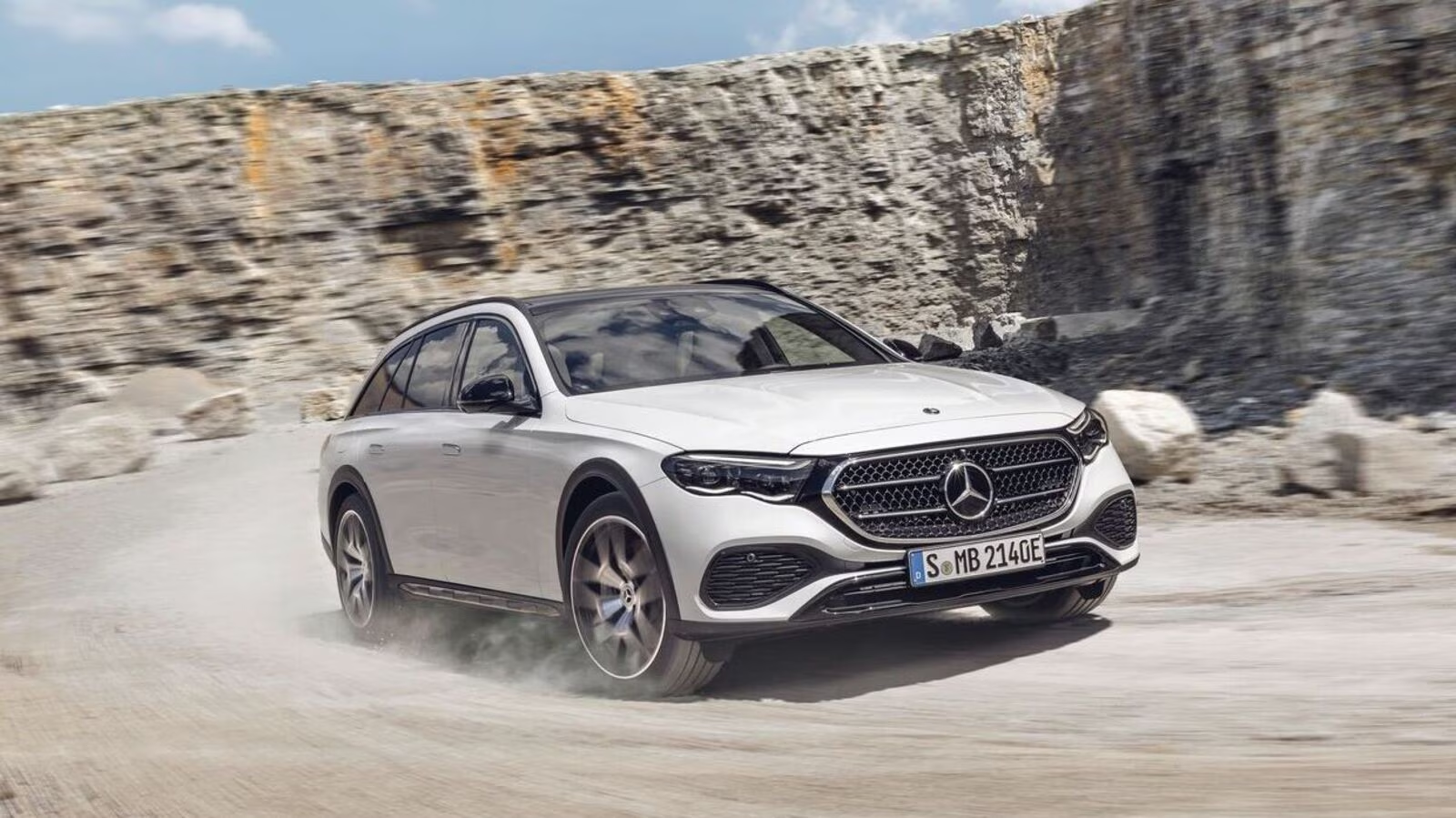
Mercedes E-Class Wagon (W211)
Before Mercedes focused so much on beating Tesla and affecting sales of its AMG models, the brand was known for building cars with a lot of personality and elegance.
That was true for the W211 E-Class, which was sold in North America from 2003 to 2009. The W211 had a simple and classy look, came with all the features you’d want, and was available as both a sedan and a wagon.
The W211 wagon is a great-looking car, with the design of that time fitting really well into the longer wagon shape. Even though this model was made during a time when Mercedes started cutting back on costs (and reliability), the W211 holds up well if it gets the care it needs.
It came with many engine choices, including a diesel V6 in the E320 CDI and a gas V6 in the E350, and both of those offered 4MATIC all-wheel drive. Of course, there was also an E55 and E63 AMG if you prefer something faster.
I’ve driven the E320 CDI and the E350, and they’re both great. The E320 feels quicker than expected for only having around 200 horsepower, thanks to its strong low-end torque. The E350 feels more powerful and makes a great sound while driving.
The W211 E-Class wagon had something you almost never see now: rear-facing third-row seats in the cargo space. Without those seats, the cargo space measures 24.4 cubic feet, which is quite generous. These days, you can find a W211 for under $10,000, even with lower mileage.
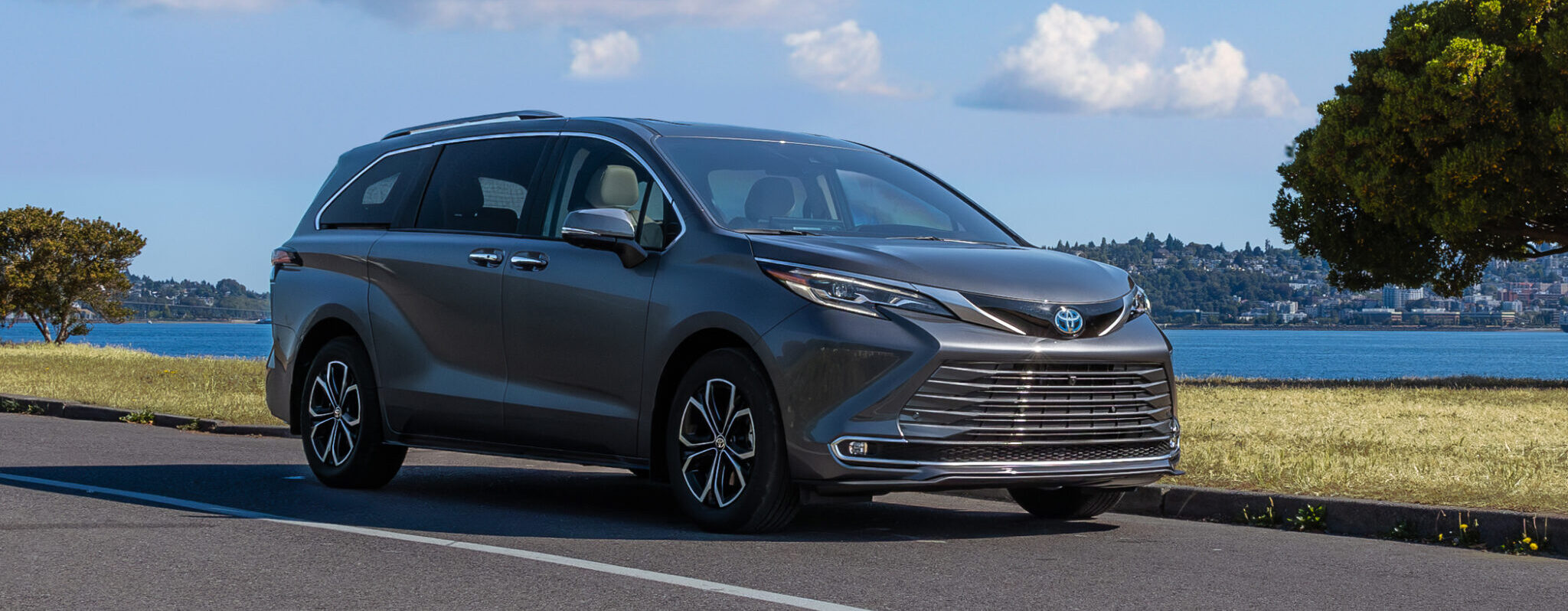
Toyota Sienna (XL30)
SUVs are taking over the market and cutting into minivan sales, which is a bit of a shame. To try to keep up, many newer minivans are being packed with complicated hybrid systems and lots of tech.
But sometimes, all you really want is a reliable, safe, and simple family car that won’t cost too much. That’s exactly what the XL30 Toyota Sienna offered.
Production started in 2010 for the 2011 model year, and this version was a solid update to Toyota’s well-known minivan.
It was the last one that didn’t come with a hybrid system. Instead, it offered either a big four-cylinder engine or a 3.5-liter V6. That engine, the 2GR-FE, is part of Toyota’s trusted GR engine family.
Yes, that’s the same engine used in the Lotus Evora. This means you can actually get a bit more power from it if you want to give your minivan a touch of weekend fun.
But there’s more to the Sienna than just its engine. All-wheel drive is widely available, similar to many SUVs today, and it can carry up to eight people.
While there are a few small things to watch out for in terms of reliability, a well-kept XL30 Sienna will easily last until your kids head off to college.
It might be a bit harder to find one with low mileage, but if it’s been looked after, that won’t be a big issue. A good XL30 Sienna usually costs between $15,000 and $20,000, which makes it a solid choice for families.
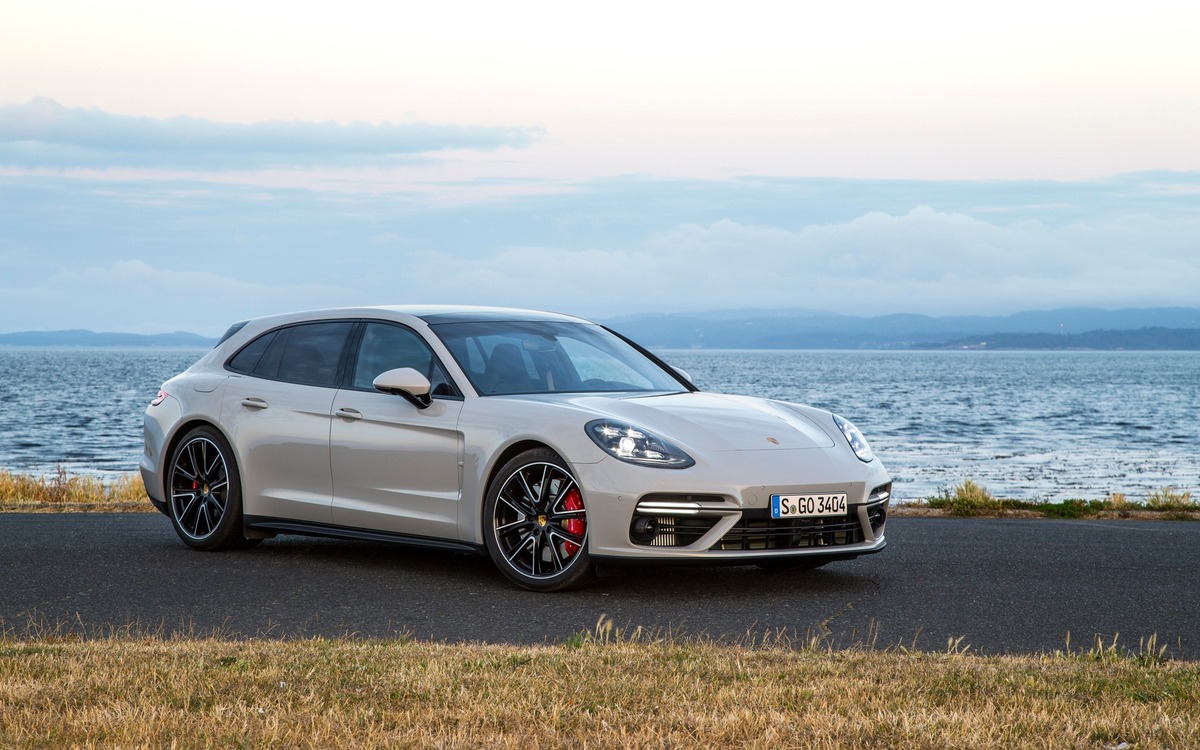
Porsche Panamera Sport Turismo
Now let’s look at something completely different. This one costs a lot more, but in return, you get one of the best family cars you can buy.
With the second generation of the Panamera, Porsche added the Sport Turismo version — a station wagon, which many feel the Panamera should have had from the start. Sadly, because wagons aren’t very popular, the Sport Turismo is no longer being made. Cue the sad violin.
The Sport Turismo fixed the Panamera’s awkward shape and made it much more useful. With 18.3 cubic feet of space in the back, the Panamera Sport Turismo really fits the definition of a station wagon.
It replaces the individual rear seats with a bench, so it can carry five people. On top of all that extra practicality, it’s still a Porsche Panamera.
Engine choices ranged from a 2.9-liter V6 with 325 horsepower to a 690-horsepower plug-in hybrid V8 in the Turbo S E-Hybrid. There’s also the great-sounding twin-turbo V8 GTS, which I’ve driven. It’s every bit as good as you’d hope.
The Panamera comes with all the features and tech you could ask for, plus high performance, even if you don’t need that much power. Just take it easy with your passengers, because the Panamera accelerates hard no matter which engine it has.
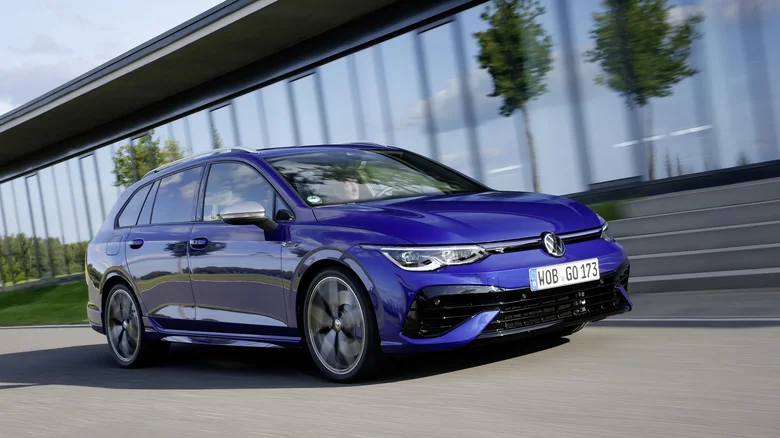
Volkswagen Golf R Estate
The Volkswagen Golf R is an amazing high-performance hatchback, and probably one of the last of its kind. The Mk8 version improves on the formula better than ever, making it one of the top choices in the hot hatchback category right now.
It’s also one of the last of these cars still sold in the U.S. and Canada, which means people here are missing out on the very best version of the Golf R.
In Europe, buyers can also choose the Golf R Estate. As the name suggests, it takes everything that’s great about the Golf R and puts it into a more useful wagon shape.
That includes the 2.0-liter turbocharged four-cylinder engine with 315 horsepower, and it can go from 0 to 60 in under five seconds. It even has a drift mode. In a wagon. With 21.5 cubic feet of cargo space.
It comes standard with all-wheel drive and a dual-clutch automatic transmission. If you can handle the Mk8 Golf’s frustrating controls and technology — and yes, they really are frustrating — this car is a much better choice for fast, comfortable family travel.
You won’t get the extra ride height of an SUV, but in nearly every other way, the Golf R Estate is more fun and more practical than a Tiguan could ever be.
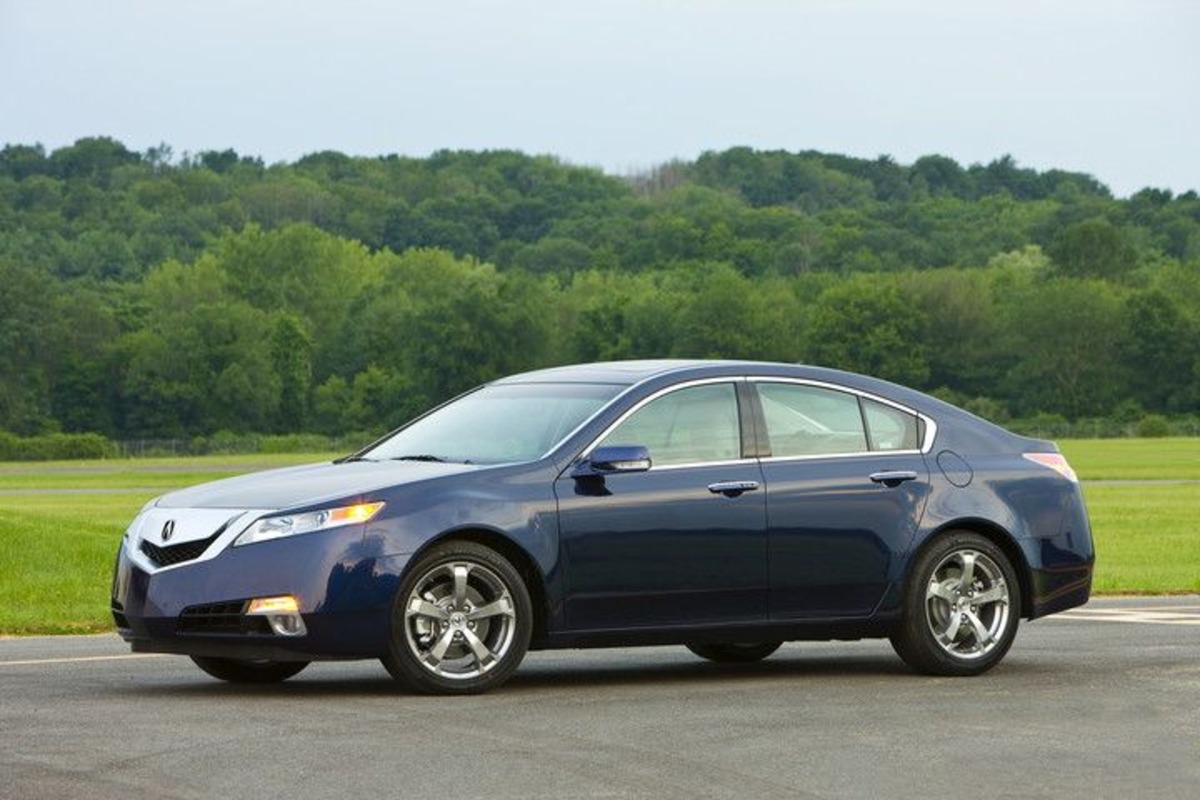
Acura TSX
In the early 2000s, Honda gave North America a version of the Accord that people in Europe and Japan were already familiar with. They brought over the CL7 Accord and sold it here as the Acura TSX. This helped fill a spot in the Acura lineup for a smaller sports sedan.
Even though the TSX didn’t sell as well as some other models, it was one of the best-handling sedans of its time, and definitely one of the best-driving Acuras. I’ve driven both generations and I feel the same about the second one.
The second generation TSX was based on the CU2 Accord, which followed the CL7. It’s a fun car to drive, comes with a lot of features, is known for being reliable, and looks great.
Acura even made a wagon version of this TSX, giving it more room inside and in the back. It came with the solid K24 2.4-liter four-cylinder engine that made 201 horsepower.
Sadly, the strong J35 V6, which was only used in the TSX and not offered in the CU2 Accord outside of North America, never made it into the wagon. The wagon also didn’t come with AWD. Still, the TSX can handle most of the light-duty driving people usually use SUVs for.
Plus, it’s more fun to drive, came with a manual option, and it’s a smart pick for car fans who appreciate a hidden gem. People at car meets will definitely give you the right kind of look.
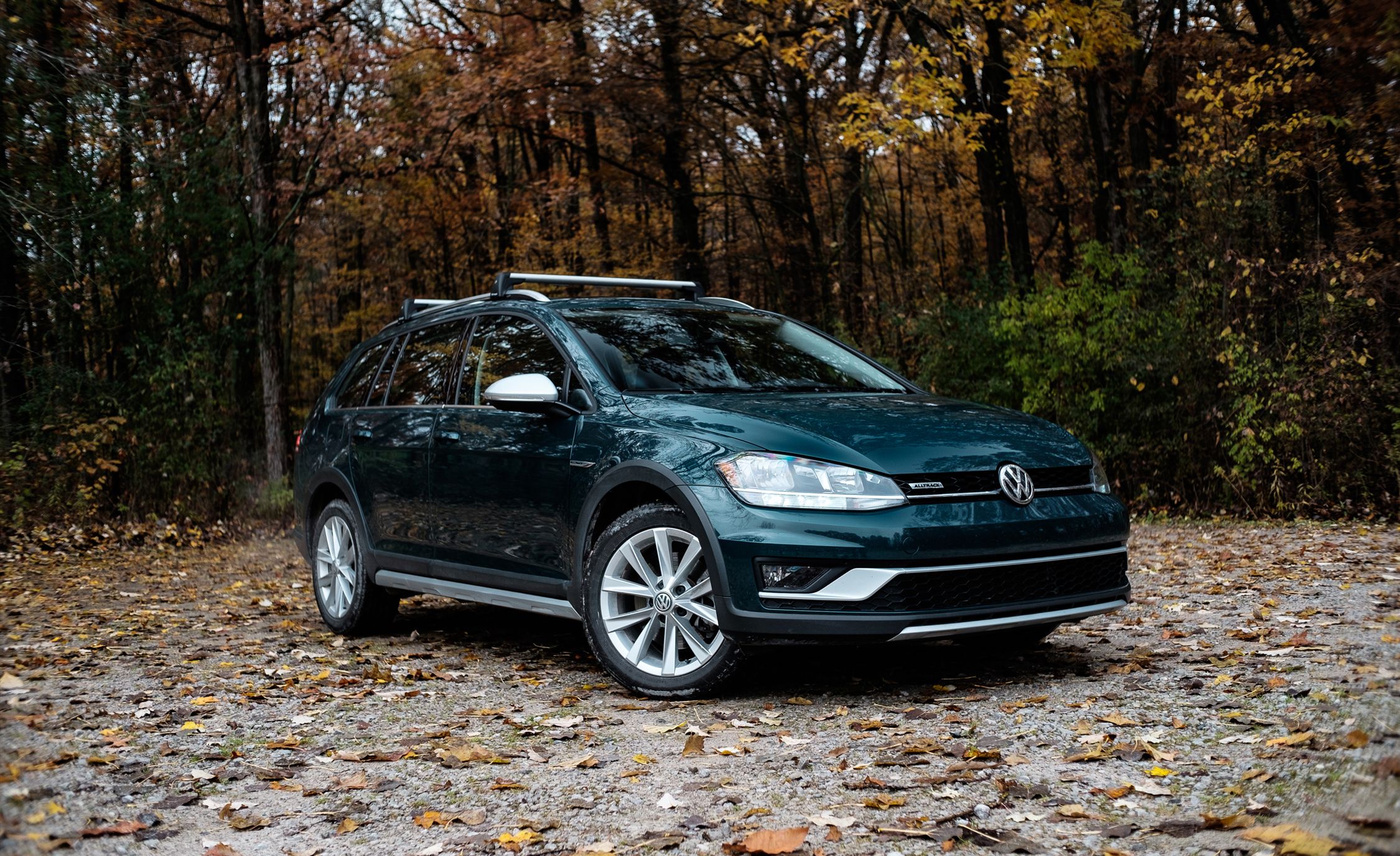
Volkswagen Golf Alltrack
Like mentioned earlier, the Golf R Estate never came to North America. But drivers here did get a different Golf wagon that, while not quite as exciting, was still very cool. In 2017, the Golf Alltrack was introduced in the U.S. and Canada.
It was based on the Golf Sportwagen, but with some added features. It had plastic trim around the body, a raised suspension, and standard AWD. Put all that together, and you get something close to a Golf version of the Subaru Outback.
Unfortunately, the Alltrack came out during the time of Volkswagen’s Dieselgate scandal, so it didn’t get one of the best engines available in the Mk7 Golf lineup: the 148-horsepower 2.0-liter TDI diesel.
With the DSG automatic transmission, this engine worked really well, and the shifting felt quick and smooth no matter how you drove. The 1.8 TSI gas engine was still very capable, producing 170 horsepower. That power went to all four wheels through either a six-speed manual or a six-speed DSG automatic.
The TDI was available in the regular Mk7 Golf Sportwagen, and swapping it into an Alltrack isn’t too hard. In fact, many engines from that time fit without much trouble.
Even if you don’t do an engine swap, the Golf Alltrack is a solid option for anyone looking for something different than an SUV. It’s one of the most overlooked and reasonably priced family cars out there.
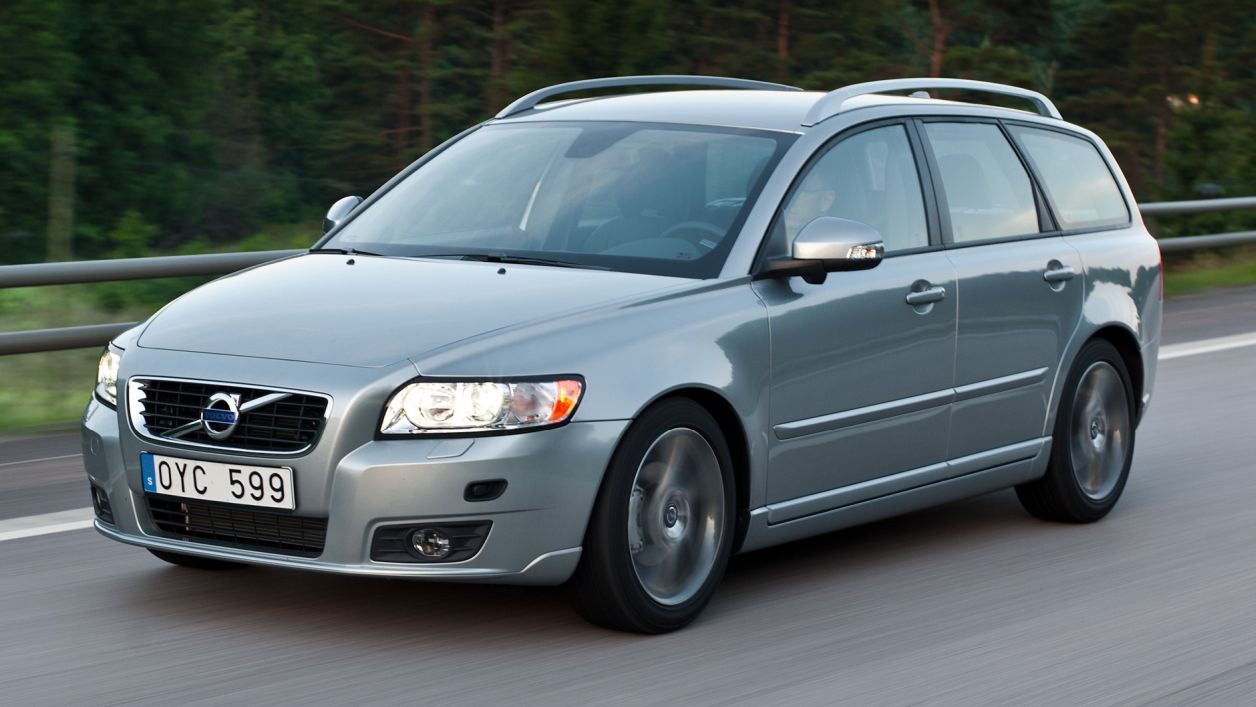
Volvo V50
Volvo has always been known for its large, square wagons that offer lots of space and other useful qualities. In the early 2000s, after Volvo was bought by Ford, the company decided to keep its small wagon idea alive. This idea started with the V40 in the 1990s, and then came the V50.
The V50 used the P1 platform, which was also used by the second generation European Ford Focus and the Mazda 3. Because of that, the V50 was usually more affordable and easier to take care of, but it still had all the usual Volvo qualities. It was still roomy, practical, safe, and good to drive.
As you’d expect from Volvo, there was a 2.5-liter turbocharged five-cylinder engine available. You could get it with AWD, and it made 218 horsepower.
That gave you a wagon that, as I recently found out, is very enjoyable behind the wheel. It feels solid, smooth, handles turns well, and the manual transmission is a pleasure to use.
The V50 is one of the least expensive used wagons you can buy, and with that strong Volvo five-cylinder engine, even cars with higher mileage won’t be a problem — as long as they’ve been properly maintained.
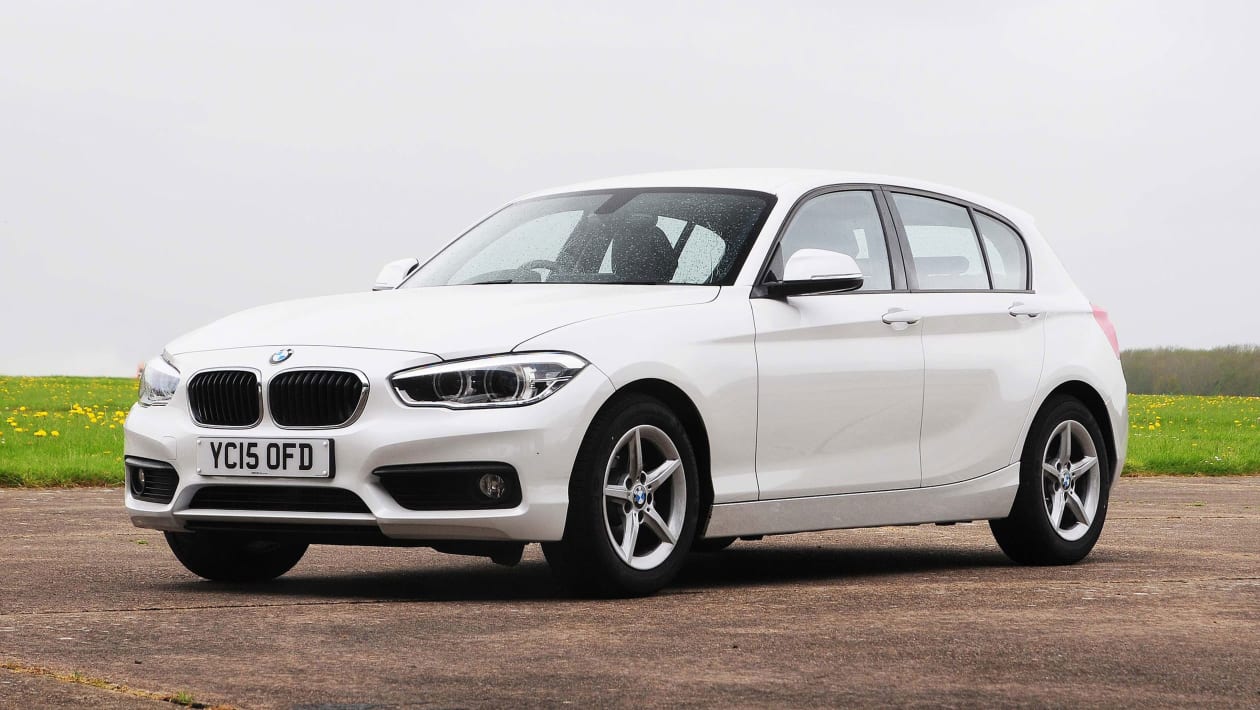
BMW 1 Series Mk2 (2011–2019)
Forget the usual way front-wheel-drive hatchbacks behave! This rear-wheel-drive model brings back memories of the classic BMW E30, with sharp steering and a fun attitude that makes you want to go for a spirited drive.
But unlike the old classic, this one comes with reliable engines, a comfortable and nicely designed interior that makes everyday driving enjoyable, and lots of choices to help you set it up just how you like.
This isn’t merely a sporty compact, it’s an exceptional all-rounder, effortlessly shifting between exhilarating weekend drives and the demands of everyday practicality.
So strap in, feel the balance of rear-wheel precision, and rediscover the thrill of driving with this modern tribute to a motorsport legend.
These days, the BMW 1 Series is such a common presence on the roads that it’s easy to forget there was a time it didn’t exist at all. BMW had long recognized the need to break into the family hatchback segment and appeal to younger drivers by offering a more affordable, livelier entry-level vehicle.
BMW first tried this in 1993 with the 3 Series Compact. The idea was simple: take the 3 Series, make it shorter, and give it a hatchback rear.
But when it was released, this cheaper BMW didn’t quite meet expectations. It didn’t have a five-door version, so it wasn’t very practical, and its interior came from the older 3 Series sedan, making it feel outdated and low-quality. It was a budget BMW, and it felt like one.
A completely new 3 Series Compact came out in 2000, and this time the interior was much better and more refined.
Even so, it still only had three doors. Competing cars like the Mercedes-Benz A-Class and Audi A3 were available with five doors, giving buyers more flexibility. This made the Compact seem like an incomplete effort.
In 2004, BMW dropped the Compact and launched the kind of model they probably should have made from the beginning: a brand-new car line with both three- and five-door options.
It kept BMW’s rear-wheel-drive setup and came with several diesel and petrol engine choices, including both four- and six-cylinder versions. This was the first generation of the BMW 1 Series.
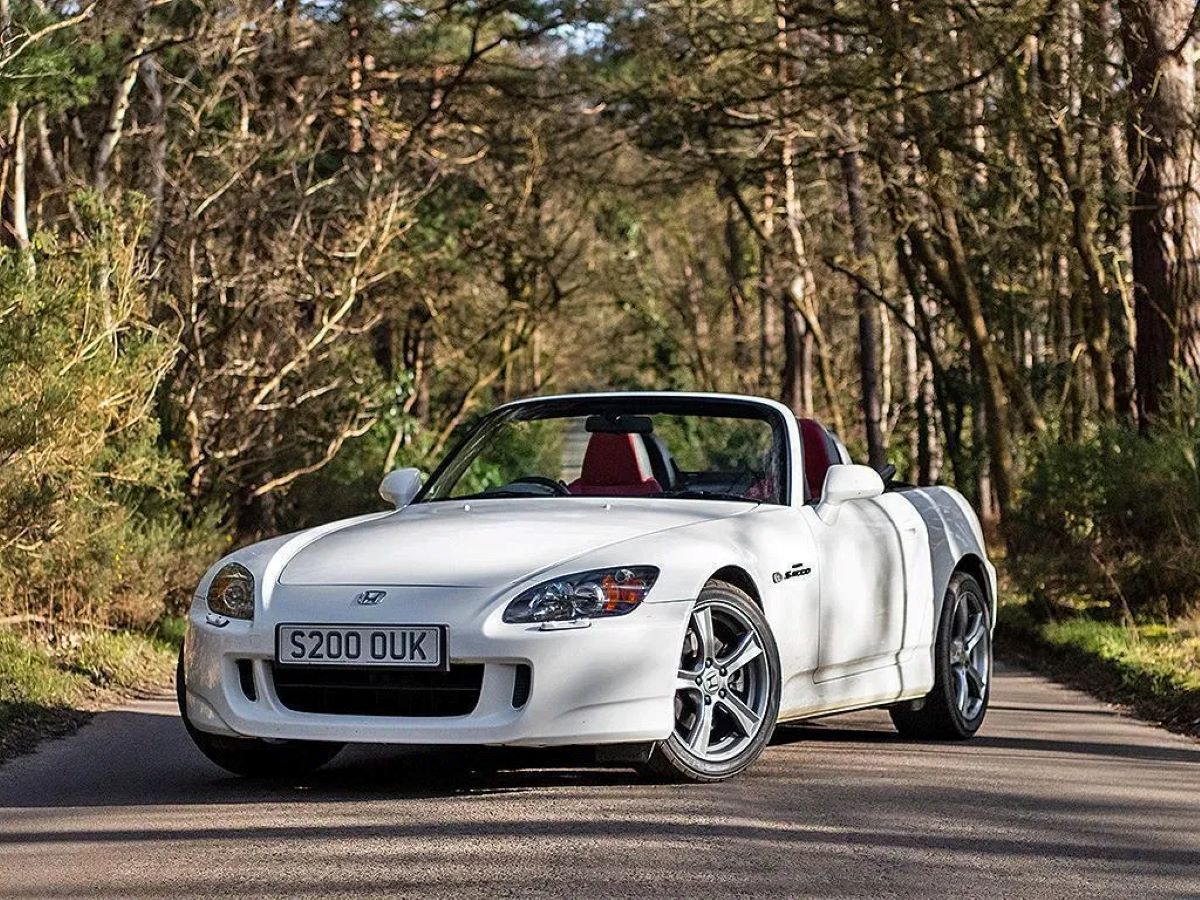
Honda S2000 (1999–2009)
At a time when most cars are built with turbocharged engines and automatic transmissions, this open-top roadster proudly stands apart. Forget lifeless screens and overly cushioned rides this car delivers a raw, high-revving symphony of naturally aspirated excitement.
Every time you press the gas pedal, it feels like a mechanical work of art, and the engine pushes you to go all the way to the redline. Every turn in the road feels like part of a race track, with the sharp handling inviting you to take every corner with focus and excitement.
This isn’t merely a car it’s a visceral experience, a direct and unfiltered bond with the road and the pure exhilaration of driving. It’s a powerful reminder of what a true enthusiast’s dream machine really looks like.
Drop the top, let the wind rush past, and immerse yourself in the unrestrained joy of this modern classic throwback.
To celebrate its 50th birthday, Honda built something really special—the fast and thrilling S2000 roadster. With one of the most impressive engines Honda ever made, the S2000 showed off what the company could do, offering 240bhp from a 2.0-litre engine with no turbo.
That number was even higher per litre than the twin-turbo Lotus Esprit V8 GT, showing just how far Honda could push its engineering skills. The rest of the car was built with Honda’s deep motorsport experience, and it was designed to offer a powerful and connected driving experience for people who love cars.
Now that used versions are popping up for sale in the UK, there’s a question—does the S2000 still feel like a dream car that’s within reach, or is it a risky choice with mechanical worries? You can find out here.
On paper, this car performed like the top-end NSX—yet cost less than half as much.
With its sharp styling and an engine sound that brings to mind Formula One cars echoing through country roads, it seemed like it would be a guaranteed success. Even though it was very popular at first, the S2000 eventually faded from the list of top sports cars.
So, did newer rivals simply do things better, or was the S2000 just too different for the average person looking for a British roadster?
Discover whether a used S2000 still holds up here. The S2000 has its roots in Honda’s early sports cars—the S360 and S500, first shown at the 1963 Tokyo Motor Show.
Also Read: Top 10 Budget-Friendly & Luxury Trucks You Can Buy
Those early cars were built with parts and ideas taken from motorcycles, including engines that could rev all the way to 14,000 rpm and chain-driven rear wheels, showing how Honda’s motorcycle history influenced their car design.
By 1965, the S800 was added to the lineup. But it wasn’t until Honda turned 50 in 1999 that the S2000 came out in the UK.
Since its launch, the S2000 hasn’t changed much. A heated hardtop was added in late 2000 to help with complaints that the convertible was too harsh for everyday use.
The heart of the car is its 2.0-litre engine, making 237bhp. That’s 119bhp per litre—setting a record for a car without a turbo or supercharger.
In early 2004, Honda made some updates to the suspension to fix what some drivers thought was a rear end that was too twitchy. These changes helped improve the car’s balance without making it feel less exciting.

